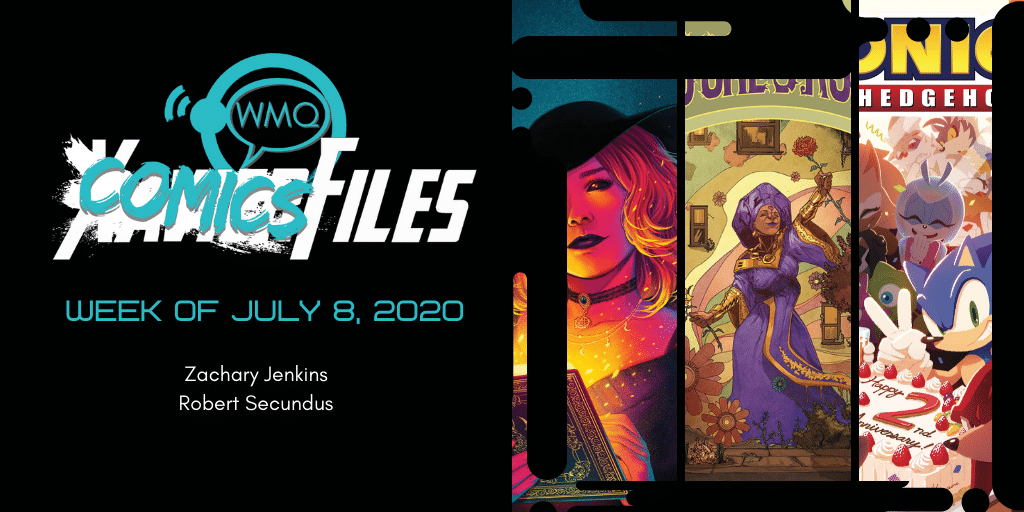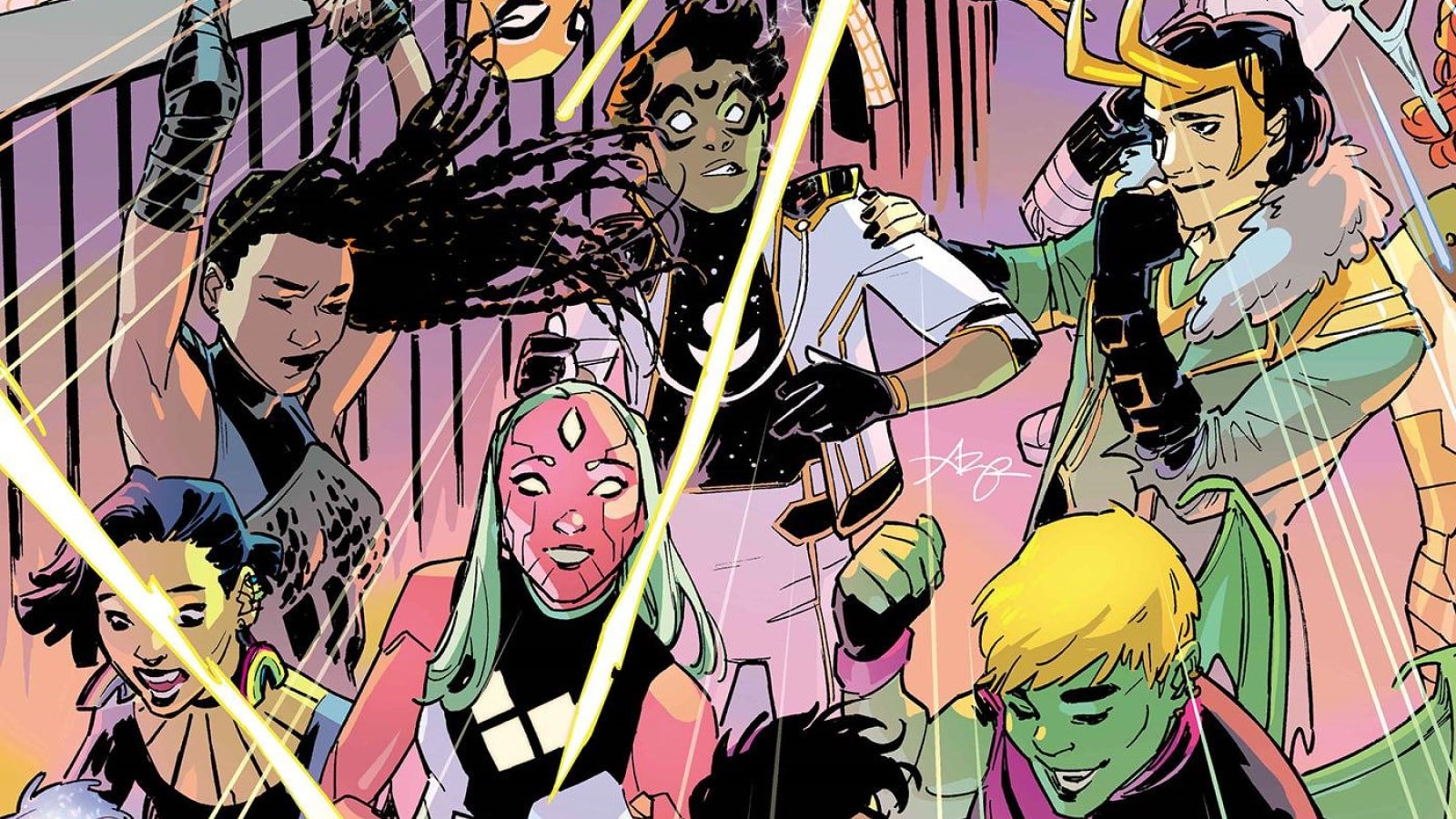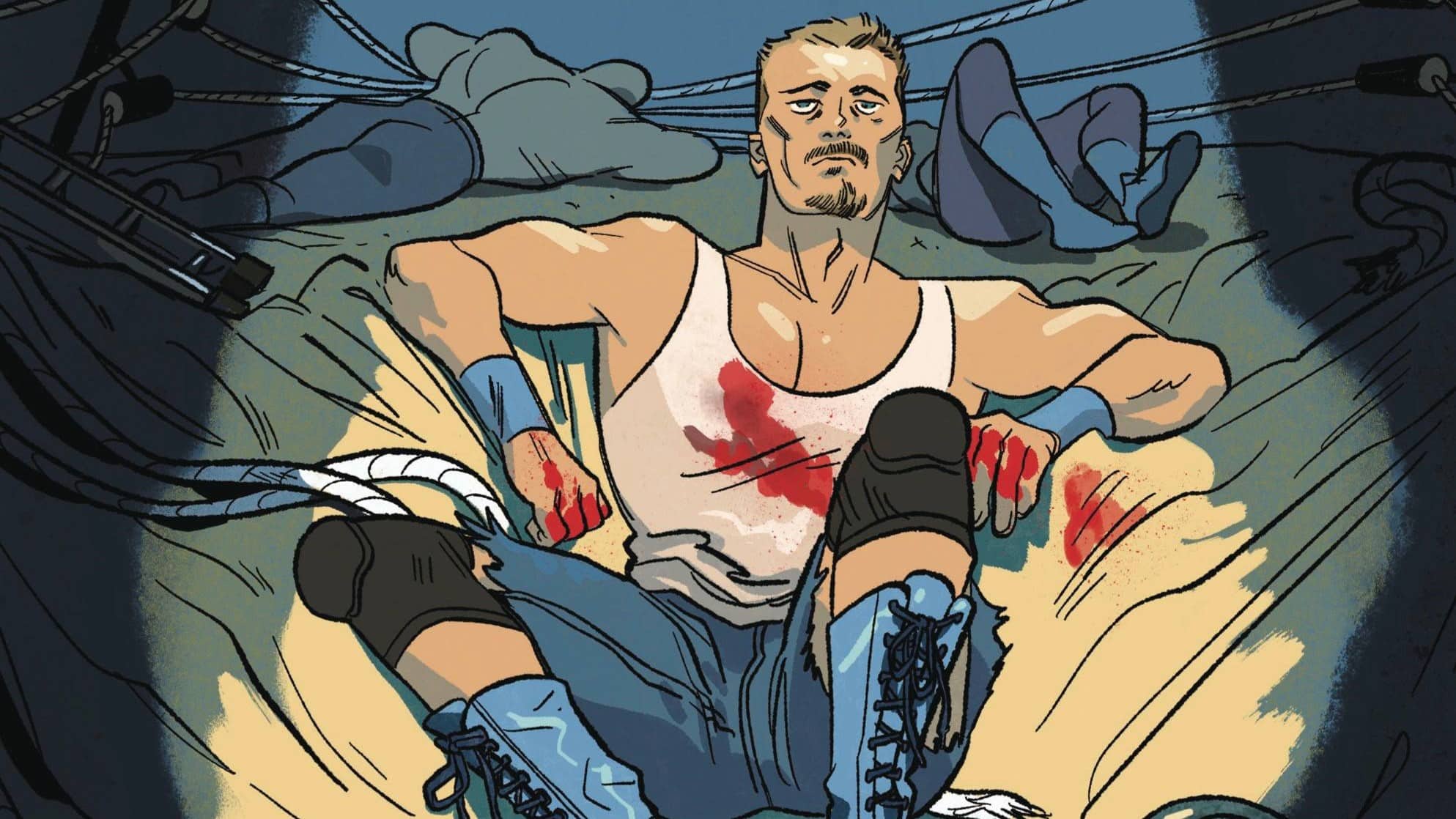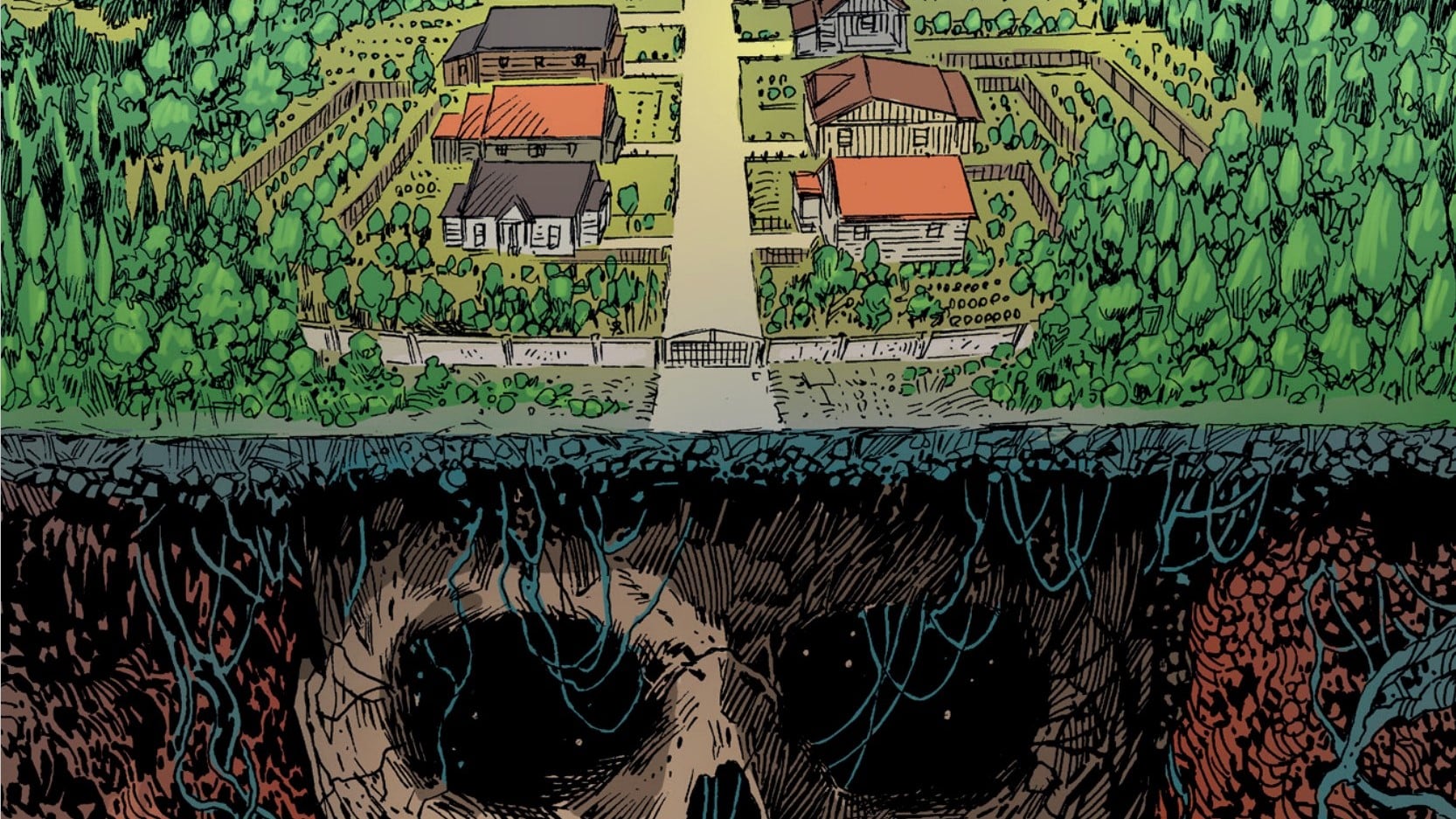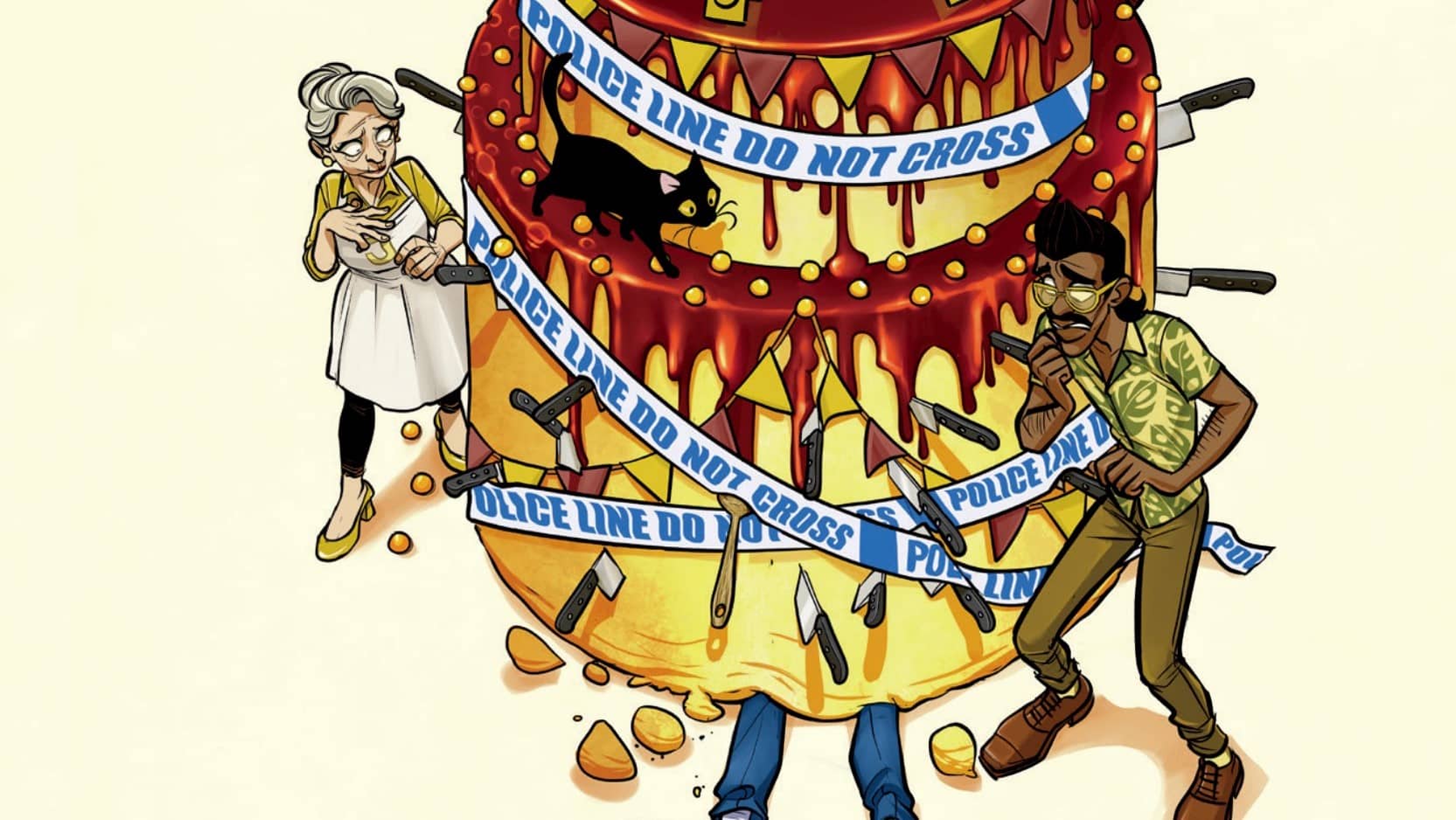This week’s roundup of indie comics reviews has a heavily licensed flavor, as Zachary Jenkins decides, “Why not read Sonic the Hedgehog comics?” and Robert Secundus acquaints himself with BOOM Studios’ “Ultimate Spider-Man”-ified take on the world of “Buffy the Vampire Slayer.” But first, Rob looks at what Vault Comics’ “No One’s Rose” can teach us about our present condition.
No One’s Rose #3
Writers: Zac Thompson and Emily Horn, Artist: Alberto Alburquerque, Colorist: Raul Angulo, Letterer: Hassan Otsmane-Elhaou, Publisher: Vault

A lot of comics have aged weirdly over the last few months. “Undiscovered Country” seemed to grow more relevant in its depiction of an isolationist America amid a global pandemic, but that seeming made problems with the series even more apparent. “Daredevil” has been tackling police violence and the oppression of marginalized communities by the ultra-wealthy, but it too has, as its subject has become central in the public discourse, seemed to somewhat miss the mark. “No One’s Rose,” on the other hand, does not feature a plot which directly mirrors our present moment, and yet seems to have an incredible relevance to that moment.
“No One’s Rose” #1 introduced us to an optimistic future, a future where humanity actually managed to survive the apocalypse and create something sustainable in the face of global ecological collapse. “No One’s Rose” #2 began to expand our image of the future. The series was not expressing a utopian vision. Even in this optimistic vision of a possible society, problems still remained within that society. But these were still solvable problems: activism, rebellion and revolution could reform that society.
In “No One’s Rose” #3, the full scope of the series is revealed.
In this issue, the problems our protagonists face become complicated further. One is brought further under the thumb of the ruling class, as she’s forced to produce propaganda for them and then embark on an imperialist mission. The other realizes the rebellion he’s joined has, within its own ranks, mirrored to an extent the power structures and biases of the very society against which they are rebelling. He must work to change that rebellion’s leadership if he hopes to avoid harming the marginalized. But clearly, there’s a new danger here too, as he risks distracting from its task with infighting or, at worst, its own civil war.
In another story, at this point, I would say we’re nearing the climax of a tragedy, that we’re seeing each piece set into place for an inevitable doom. But doom is, in “No One’s Rose,” extremely evitable. There’s no fate here. Each and every person on panel has agency, and each and every person might still avoid the traps in front of them, might solve whatever new problems confront them. They may still fail — but if they do so, their failure will be due entirely to their own freely made choices. Nothing is preordained. There will always be problems in this society — and there will always be solutions, if only people are willing to work for them.
Right now, grifters continue to skim money away from activist organizations; politicians co-opt progressive language to mask their regressive policies and convince the populace their demands are being heard; propaganda machines go so far as to hire Instagram models to pose as Black Panthers hanging out with cops; liberal politicians refuse to listen to the demands of their constituents, instead instituting policies of “reform” that will continue to harm their communities; media figures distract from the pro-cop propaganda by loudly self-flagellating for having hosted material with a character dressed up as a Drow elf; police have wider and wider access to horrifying AI-driven facial recognition software, the U.S. government has declared an ideology without ties to any tangible organization with structure or hierarchy to be a terrorist organization, and the news has successfully shifted the discourse of the moment from “should we defund cops?” to “is getting rid of statues of slave owners like paving over Auschwitz?”
And meanwhile,
Black people are being lynched across the nation, and no one is being forced to answer for these crimes.
Citizens continue to be sacrificed to Moloch amid a global pandemic in order to keep the NASDAQ up.
Constitutional norms are violated by routine as we plummet toward fascist tyranny.
Global temperatures continue to rise as we ignore the existential threat of climate change.
In short, there are many problems, local, national and global, many things happening, or continuing to happen, that make any work of fiction, any piece of entertainment, seem utterly frivolous and irrelevant.
But sometimes that entertainment can speak to those problems; sometimes it has something to say worth listening to.
In this case, the optimism of “No One’s Rose” has this to tell us:
None of this is inevitable.
If we toil under tyranny or perish in hellfire, it will be because we chose this damnation ourselves.
Buffy the Vampire Slayer: Willow #1
Writer: Mariko Tamaki, Artist: Natacha Bustos, Colorist: Eleonora Bruni, Letterer: Jodi Wyne, Publisher: BOOM Studios

I didn’t start watching “Buffy the Vampire Slayer” until my senior year of high school, a good half a decade after “Angel” had gone off air. By then, the pseudo-goths I spent some days with and the nerdy message boards I visited online had convinced me the Buffyverse was good enough to risk the possibility of hellfire (any fiction involving sorcery, of course, being banned in my household). I fell in love with the world, with the characters; seeds were planted in me that would be very important later. Cordelia, Fred and Wesley would eventually rise in the fictional pantheon in my heart, but in those early days, as I prepared to head off to college, when I would sneak a single Megavideo episode stream per day, Willow and Xander were everything to me. I equally identified with both, and would often use up my precious 1 stream per day to rewatch “The Zeppo” or “Halloween” rather than move forward.
I fell away from Sunnydale for a good long while; when the aforementioned seeds it planted began to grow, I began to see problems with the series. The fridging of Tara; the valorization of Xander for just being a mediocre white male nerd; there were some really awful cracks in the foundation. I tried the comics, but the connections between “Angel” and “Buffy” were convoluted, the stuff on the page, lacking any budgetary restrictions, was far, far flung from the originals, the episodic pacing was nothing like that of television, and the season finales of both had so fundamentally altered the worlds that the universe was barely recognizable. And then, Joss Whedon, one of my heroes, one of the creators that helped, I thought, drag me out of my own wretchedness, was outed as an utterly wretched, vile man, which cemented things.
Until I saw that “Buffy” was getting an “Ultimate Spider-Man” style reboot. No more awkwardly stitching television seasons into the comics form, or dumping more and more continuity on top of aging characters. Minimal involvement from Whedon, as far as I could tell. And Willow with her own story, away from Sunnydale — something I would have died for back in 2009.
Ultimate Willow.
I’m not sure what to make of her, of this.
This review is trying to answer three questions:
Is Ultimate Willow a successful rewrite of Willow?
Is Ultimate Sunnydale a successful rewrite of “Buffy”?
Is Willow #1 a good jumping on point for people new to the reboot?
Question 1. She is recognizably the Willow I loved — an empathetic nerd that struggled with isolation and a deep, deep sadness. But is she a successful update? Willow, when I watched “Buffy,” felt like a teenager from another time I had just missed. When she talked about the internet, it wasn’t the internet of my teenage years (thus her Robot Demon Boyfriend situation, etc. etc.). This Willow, on the other hand, feels recognizable to me, in a way very much like my Ultimate Peter Parker. This Willow feels (and looks) like someone I could have known in high school or college. Hell, “overthinking texting someone while getting on a jet to go be sad on a study abroad program in England” is a million times closer to my own experiences as a teenager than any moment in the entire Buffy canon. But, well, I’m not a teenager. I’m 29. Maybe the teenaged experience of the zoomer is closer to my own than I thought, but the fact that this late millennial sees so much of himself in this Willow implies to me that Ultimate Sunnydale has missed the mark in updating these characters for a new generation.
(Then again, given that the Direct Market has utterly failed in bringing in Gen Z as an audience, and given that these property reboots seem to be aimed at profiting from nostalgia, maybe it hasn’t missed the mark at all, and it really is trying to appeal to millennials who wish they could go back to a time when Season 2 of “Buffy” was still new to them).
Question 2. Here, again, I really don’t know. “Willow” takes place mostly away from Sunnydale, and mostly in the aftermath of a big event. It seems to be building out the world of the original in a really nice way; I always thought it was a shame that we never got more than glimpses outside of Sunnydale and L.A. But then, this new Buffyverse seems to have borrowed one of the less successful tropes of the Ultimate Universe (spoilers for Hellmouth, I assume): shock-killing off central characters to the property. Maybe that choice is more than earned; maybe “Buffy” is better without that character. Maybe that character helped a lot of nerds justify entrenching themselves in some shitty attitudes. I don’t know. But I do know when one of the first things I find out about a reboot is that a central character is killed off early on, I get a Millar-sour taste in my mouth.
Question 3. Everything is spelled out clearly enough that I was never confused reading the comic. If you love “Buffy,” and you love Willow, this seems like a jumping on point. There are characters and events referenced with which I am unfamiliar, but they’re presented in such a way that I know why they’re important, and I know why they’re important to Willow. And if you love Willow, I feel like this issue will be enough to hook you on this new story about her, her loneliness, her grief, her journey to find some peace, and spooky fey-like mysterious towns in which people are hunted while magical ladies enact strange bonfire rituals under moonlight at their grand estates.
So again, in the end, I’m not sure what to make of this. But I’ll be reading “Willow” #2. And #1 has convinced me to try out “Buffy” and “Angel” Vol 1. If you’ve been wanting to go back to Sunnydale again, I think, given what I’ve seen, they’re worth a shot.
Sonic the Hedgehog Annual 2020
Creators: Ian Flynn, Jonathan Gray, Reggie Graham, Evan Stanley, Caleb Goellner, Aaron Hammerstrom, Sarah Graley, Lamar Wells, Bracardi Curry, Gigi Dutreix, Sam King, Jamal Peppers, Priscilla Tramontano, Abigail Bulmer, Shawn Lee; Publisher: IDW

I, like many comics fans I imagine, know of the Sonic the Hedgehog comics but have chosen not to partake in them.
They fascinate me, though.
They are dense, continuity-filled yarns about forest creatures, like foxes, running very fast to the right side of the screen next to mythical creatures, like echidnas. It’s not what you expect from a children’s comic based on a video game I played when I was 3. Still I thought it wise to jump right into the deep end with IDW’s “Sonic the Hedgehog” Annual 2020.
This is an oversized anthology, filled to the brim with creators who are ostensibly excited to work on the Blue Blur. Our first tale comes from main series writer Ian Flynn, who focuses on Big the Cat and his search for Froggy, his creatively named frog friend. I know Big from being the absolute worst part of “Sonic Adventure” from the Sega Dreamcast I played in the waiting area of my orthodontist. I like to think that Dreamcast is still there, though I know that is a false hope. Big is used to recap what I assume to be the series thus far, but because he is very unintelligent, it is left up to the reader to fill this in with context I don’t have. If there is a bright side, it is that Jonathan Gray’s line work is stunning when he is able to go off model and add some actual mood to the saccharine scene.
Cartoonist Evan Stanley follows that up with a short about a nerdy Owl radio DJ during what seems to be a zombie apocalypse. Not a dang clue what it has to do with Sonic; they sure didn’t make a game called “Sonic The Hedgehog 3 & Knuckles & Nite the Owl,” but this ended up being the most enjoyable and human story of the bunch.
The next two tales feature a robot who doesn’t emote trying to have emotions, and duck, who I can only assume is Magica de Spell from “Ducktales,” spying on Eggman’s doll collection. It closes with two haunting shorts about this liquid metal that turns nice animals into Zombots (zombie + robot). The creators here do their darnedest to make me afraid, but I lived through “Sonic the Hedgehog (2006),” and my therapist reassures me that nothing related to the Green Hill Zone can hurt me now.
All in all, these stories aren’t bad. It’s a fluffy but enjoyable read. More than anything else, they are fascinating. They have awakened this deep desire to jump through a warp ring and try, against all odds, to understand these comics. Much like the Zombot metal, I have been consumed, nearly controlled, by a want to learn more. I fear I am in too deep.

